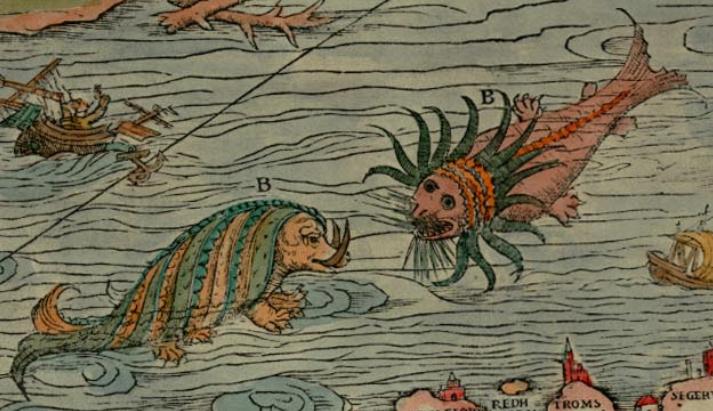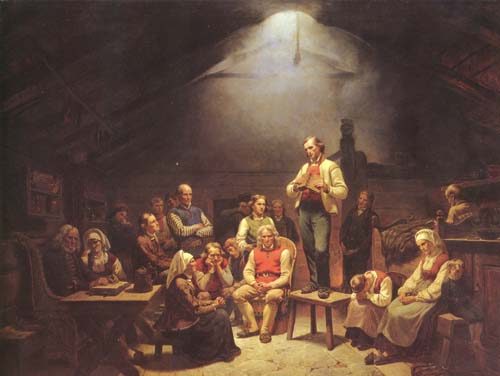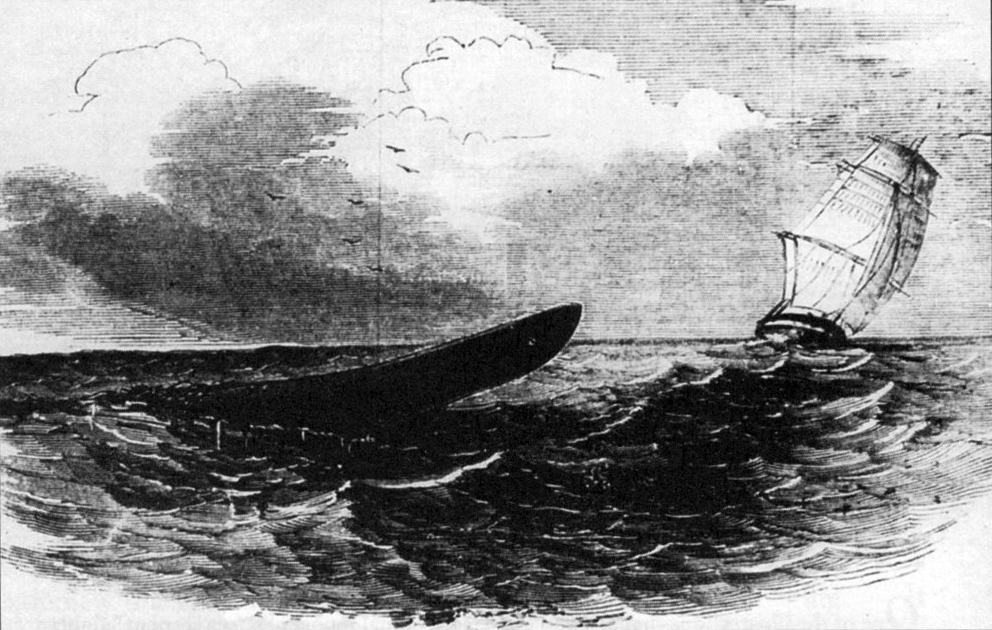|
Pontopiddan
Erik Ludvigsen Pontoppidan (24 August 1698 – 20 December 1764) was a Danish author, a Lutheran bishop of the Church of Norway, an historian, and an antiquarian. His Catechism of the Church of Denmark heavily influenced Danish and Norwegian religious thought and practice for roughly the next 200 years after its 1737 publication. Biography Pontoppidan was educated in Fredericia (1716–1718), after which he was a private tutor in Norway, and then studied in Holland, and in London and Oxford, England. In 1721 he became ''informator'' of Frederick Carl of Carlstein (later duke of Plön), and two years later morning preacher in the castle and afternoon preacher in Nordborg. From 1726 to 1734 he was pastor at Hagenberg, where he so protected the pietists as to find it advisable to defend his course against the Lutherans with ''Dialogus; oder Unterredung Severi, Sinceri, und Simplicis von der Religion and Reinheit der Lehre'' (1726) and ''Heller Glaubensspiegel'' (1727). During thi ... [...More Info...] [...Related Items...] OR: [Wikipedia] [Google] [Baidu] |
Kraken
The kraken () is a legendary sea monster of enormous size said to appear off the coasts of Norway. Kraken, the subject of sailors' superstitions and mythos, was first described in the modern age at the turn of the 18th century, in a travelogue by Francesco Negri in 1700. This description was followed in 1734 by an account from Dano-Norwegian missionary and explorer Hans Egede, who described the kraken in detail and equated it with the ''hafgufa'' of medieval lore. However, the first description of the creature is usually credited to the Norwegian bishop, Pontoppidan (1753). Pontoppidan was the first to describe the kraken as an octopus (polypus) of tremendous size, and wrote that it had a reputation for pulling down ships. The French malacologist, Denys-Montfort, of the 19th century is also known for his pioneering inquiries into the existence of gigantic octopuses. The great man-killing octopus entered French fiction when novelist Victor Hugo (1866) introduced the ' octop ... [...More Info...] [...Related Items...] OR: [Wikipedia] [Google] [Baidu] |
Chaplain
A chaplain is, traditionally, a cleric (such as a Minister (Christianity), minister, priest, pastor, rabbi, purohit, or imam), or a laity, lay representative of a religious tradition, attached to a secularity, secular institution (such as a hospital, prison, Military organization, military unit, intelligence agency, embassy, school, labor union, business, Police, police department, fire department, university, sports club), or a private chapel. Though originally the word ''chaplain'' referred to representatives of the Christian faith, it is now also applied to people of other religions or philosophical traditions, as in the case of chaplains serving with military forces and an increasing number of chaplaincies at U.S. universities. In recent times, many lay people have received professional training in chaplaincy and are now appointed as chaplains in schools, hospitals, companies, universities, prisons and elsewhere to work alongside, or instead of, official members of the clergy ... [...More Info...] [...Related Items...] OR: [Wikipedia] [Google] [Baidu] |
Lay Preacher
Lay preacher is a preacher or a religious proclaimer who is not a formally ordained cleric Clergy are formal leaders within established religions. Their roles and functions vary in different religious traditions, but usually involve presiding over specific rituals and teaching their religion's doctrines and practices. Some of the ter ... and who does not hold a formal university degree in theology. Lay preaching varies in importance between religions and their sects. Although lay preachers in many Christian denominations may be accorded titles such as Reverend or Pastor as a courtesy by people – including those in their congregation – it is only once a priest, cleric, minister or reverend has been ordained that he/she can correctly adopt that title. Movements which encourage lay preachership include: * Awakening (Finnish religious movement), Awakening (Lutheran movement, especially see Hans Nielsen Hauge, Paavo Ruotsalainen, and lay preachers organized by Lars Levi Laes ... [...More Info...] [...Related Items...] OR: [Wikipedia] [Google] [Baidu] |
The Sea Serpent
''The Sea Serpent: The Yarns of Jean Marie Cabidoulin'' (french: Les Histoires de Jean-Marie Cabidoulin, lit. ''The Stories of Jean-Marie Cabidoulin'') is an adventure novel by French author Jules Verne Jules Gabriel Verne (;''Longman Pronunciation Dictionary''. ; 8 February 1828 – 24 March 1905) was a French novelist, poet, and playwright. His collaboration with the publisher Pierre-Jules Hetzel led to the creation of the ''Voyages extraor ... first published in 1901. The story centers on a French whaling ship, the ''St. Enoch'', which sets out from Le Havre on a voyage to kill whales for their meat and oil. The ship's cooper is the eponymous Cabidoulin, a firm believer in the existence of a giant serpent with a habit of dragging vessels to their doom. Publication history *1967, UK, London, Arco, 191 pp., 60 illus., First English translation External links ''Les Histoires de Jean-Marie Cabidoulin''available aJules Verne Collection 1901 French novels Novels by Ju ... [...More Info...] [...Related Items...] OR: [Wikipedia] [Google] [Baidu] |
Twenty Thousand Leagues Under The Seas
''Twenty Thousand Leagues Under the Seas'' (french: Vingt mille lieues sous les mers) is a classic science fiction adventure novel by French writer Jules Verne. The novel was originally serialized from March 1869 through June 1870 in Pierre-Jules Hetzel's fortnightly periodical, the . A deluxe octavo edition, published by Hetzel in November 1871, included 111 illustrations by Alphonse de Neuville and Édouard Riou. The book was widely acclaimed on its release and remains so; it is regarded as one of the premier adventure novels and one of Verne's greatest works, along with ''Around the World in Eighty Days'' and ''Journey to the Center of the Earth''. Its depiction of Captain Nemo's underwater ship, the ''Nautilus'', is regarded as ahead of its time, since it accurately describes many features of today's submarines, which in the 1860s were comparatively primitive vessels. A model of the French submarine ''Plongeur'' (launched in 1863) figured at the 1867 Exposition Universelle ... [...More Info...] [...Related Items...] OR: [Wikipedia] [Google] [Baidu] |
Jules Verne
Jules Gabriel Verne (;''Longman Pronunciation Dictionary''. ; 8 February 1828 – 24 March 1905) was a French novelist, poet, and playwright. His collaboration with the publisher Pierre-Jules Hetzel led to the creation of the ''Voyages extraordinaires'', a series of bestselling adventure novels including ''Journey to the Center of the Earth'' (1864), ''Twenty Thousand Leagues Under the Seas'' (1870), and '' Around the World in Eighty Days'' (1872). His novels, always well documented, are generally set in the second half of the 19th century, taking into account the technological advances of the time. In addition to his novels, he wrote numerous plays, short stories, autobiographical accounts, poetry, songs and scientific, artistic and literary studies. His work has been adapted for film and television since the beginning of cinema, as well as for comic books, theater, opera, music and video games. Verne is considered to be an important author in France and most of Europe, where ... [...More Info...] [...Related Items...] OR: [Wikipedia] [Google] [Baidu] |
Moby-Dick
''Moby-Dick; or, The Whale'' is an 1851 novel by American writer Herman Melville. The book is the sailor Ishmael (Moby-Dick), Ishmael's narrative of the obsessive quest of Captain Ahab, Ahab, captain of the whaler, whaling ship ''Pequod (Moby-Dick), Pequod'', for revenge against Moby Dick (whale), Moby Dick, the giant white sperm whale that on the ship's previous voyage bit off Ahab's leg at the knee. A contribution to the literature of the American Renaissance (literature), American Renaissance, ''Moby-Dick'' was published to mixed reviews, was a commercial failure, and was out of print at the time of the author's death in 1891. Its reputation as a "Great American Novel" was established only in the 20th century, after the 1919 centennial of its author's birth. William Faulkner said he wished he had written the book himself, and D. H. Lawrence called it "one of the strangest and most wonderful books in the world" and "the greatest book of the sea ever written". Its opening sente ... [...More Info...] [...Related Items...] OR: [Wikipedia] [Google] [Baidu] |
Herman Melville
Herman Melville (Name change, born Melvill; August 1, 1819 – September 28, 1891) was an American people, American novelist, short story writer, and poet of the American Renaissance (literature), American Renaissance period. Among his best-known works are ''Moby-Dick'' (1851); ''Typee'' (1846), a romanticized account of his experiences in Polynesia; and ''Billy Budd, Billy Budd, Sailor'', a posthumously published novella. Although his reputation was not high at the time of his death, the 1919 centennial of his birth was the starting point of a #Melville revival and Melville studies, Melville revival, and ''Moby-Dick'' grew to be considered one of the great American novels. Melville was born in New York City, the third child of a prosperous merchant whose death in 1832 left the family in dire financial straits. He took to sea in 1839 as a common sailor on a merchant ship and then on the whaler ''Acushnet'', but he jumped ship in the Marquesas Islands. ''Typee'', his first b ... [...More Info...] [...Related Items...] OR: [Wikipedia] [Google] [Baidu] |
Mermaid
In folklore, a mermaid is an aquatic creature with the head and upper body of a female human and the tail of a fish. Mermaids appear in the folklore of many cultures worldwide, including Europe, Asia, and Africa. Mermaids are sometimes associated with perilous events such as floods, storms, shipwrecks, and drownings. In other folk traditions (or sometimes within the same traditions), they can be benevolent or beneficent, bestowing boons or falling in love with humans. The male equivalent of the mermaid is the merman, also a familiar figure in folklore and heraldry. Although traditions about and sightings of mermen are less common than those of mermaids, they are generally assumed to co-exist with their female counterparts. The male and the female collectively are sometimes referred to as merfolk or merpeople. The Western concept of mermaids as beautiful, seductive singers may have been influenced by the Sirens of Greek mythology, which were originally half-birdlike, but ca ... [...More Info...] [...Related Items...] OR: [Wikipedia] [Google] [Baidu] |
Sea Serpent
A sea serpent or sea dragon is a type of dragon sea monster described in various mythologies, most notably Mesopotamian (Tiamat), Judaeo-Christian (Leviathan), Greek (Cetus, Echidna, Hydra, Scylla), and Norse (Jörmungandr). Mythology and folklore Mediterranean and Western Asia The mytheme, the chief god in the role of the hero slaying a sea serpent, is widespread both in the ancient Near East and in Indo-European mythology, e.g. Lotan and Hadad, Leviathan and Yahweh, Tiamat and Marduk (see also Labbu, Bašmu, Mušḫuššu), Illuyanka and Tarhunt, Yammu and Baal in the Baal Cycle etc. The Hebrew Bible also has less mythological descriptions of large sea creatures as part of creation under God's command, such as the Tanninim mentioned in Book of Genesis 1:21 and the "great serpent" of Amos 9:3. In the Aeneid, a pair of sea serpents killed Laocoön and his sons when Laocoön argued against bringing the Trojan Horse into Troy. In antiquity and in the Bible, dragons were envi ... [...More Info...] [...Related Items...] OR: [Wikipedia] [Google] [Baidu] |
University Of Copenhagen
The University of Copenhagen ( da, Københavns Universitet, KU) is a prestigious public university, public research university in Copenhagen, Copenhagen, Denmark. Founded in 1479, the University of Copenhagen is the second-oldest university in Scandinavia after Uppsala University, and ranks as one of the top universities in the Nordic countries, Europe and the world. Its establishment sanctioned by Pope Sixtus IV, the University of Copenhagen was founded by Christian I of Denmark as a Catholic teaching institution with a predominantly Theology, theological focus. In 1537, it was re-established by King Christian III as part of the Lutheran Reformation. Up until the 18th century, the university was primarily concerned with educating clergymen. Through various reforms in the 18th and 19th century, the University of Copenhagen was transformed into a modern, Secularism, secular university, with science and the humanities replacing theology as the main subjects studied and taught. Th ... [...More Info...] [...Related Items...] OR: [Wikipedia] [Google] [Baidu] |








